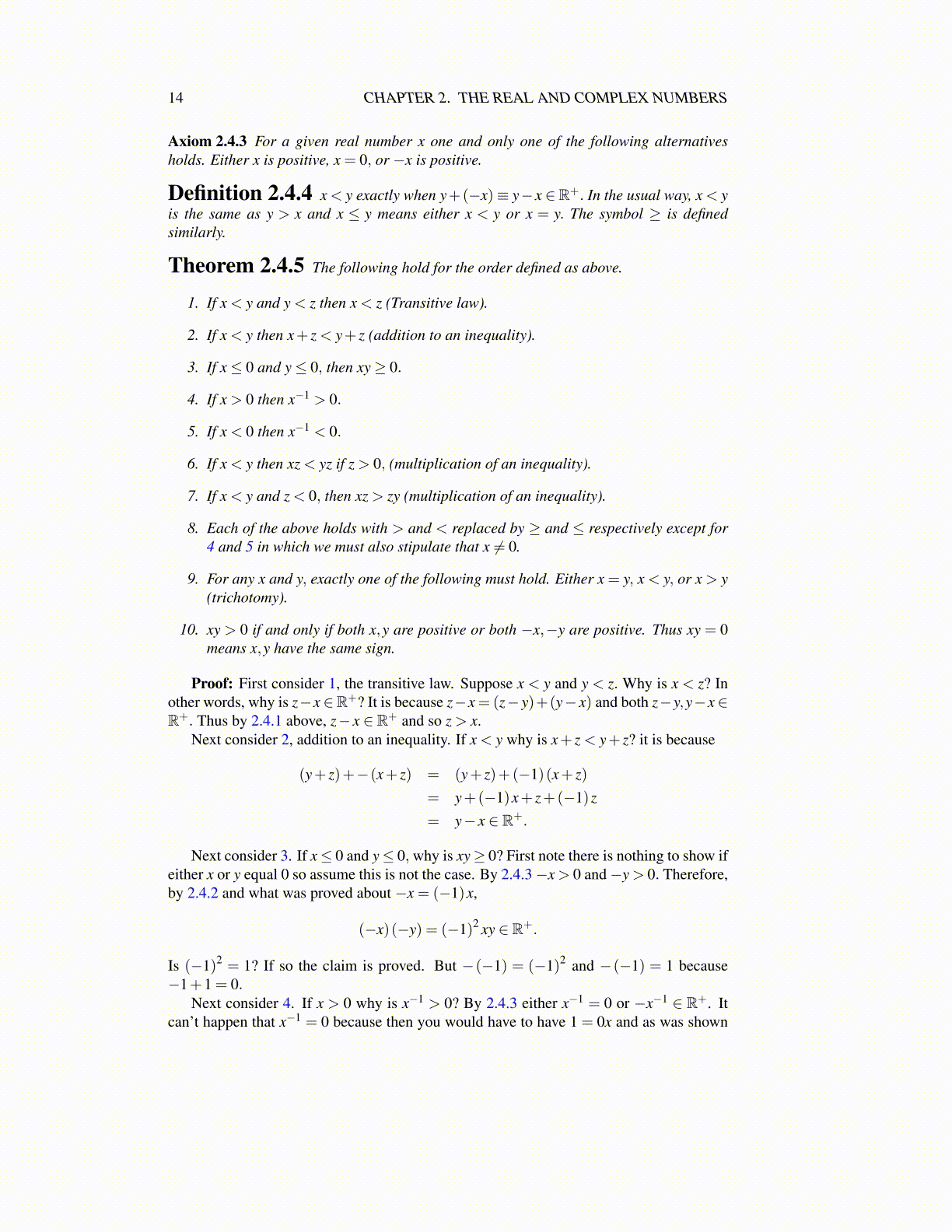
14 CHAPTER 2. THE REAL AND COMPLEX NUMBERS
Axiom 2.4.3 For a given real number x one and only one of the following alternativesholds. Either x is positive, x = 0, or −x is positive.
Definition 2.4.4 x < y exactly when y+(−x)≡ y−x ∈R+. In the usual way, x < yis the same as y > x and x ≤ y means either x < y or x = y. The symbol ≥ is definedsimilarly.
Theorem 2.4.5 The following hold for the order defined as above.
1. If x < y and y < z then x < z (Transitive law).
2. If x < y then x+ z < y+ z (addition to an inequality).
3. If x≤ 0 and y≤ 0, then xy≥ 0.
4. If x > 0 then x−1 > 0.
5. If x < 0 then x−1 < 0.
6. If x < y then xz < yz if z > 0, (multiplication of an inequality).
7. If x < y and z < 0, then xz > zy (multiplication of an inequality).
8. Each of the above holds with > and < replaced by ≥ and ≤ respectively except for4 and 5 in which we must also stipulate that x ̸= 0.
9. For any x and y, exactly one of the following must hold. Either x = y, x < y, or x > y(trichotomy).
10. xy > 0 if and only if both x,y are positive or both −x,−y are positive. Thus xy = 0means x,y have the same sign.
Proof: First consider 1, the transitive law. Suppose x < y and y < z. Why is x < z? Inother words, why is z−x∈R+? It is because z−x = (z− y)+(y− x) and both z−y,y−x∈R+. Thus by 2.4.1 above, z− x ∈ R+ and so z > x.
Next consider 2, addition to an inequality. If x < y why is x+ z < y+ z? it is because
(y+ z)+−(x+ z) = (y+ z)+(−1)(x+ z)
= y+(−1)x+ z+(−1)z
= y− x ∈ R+.
Next consider 3. If x≤ 0 and y≤ 0, why is xy≥ 0? First note there is nothing to show ifeither x or y equal 0 so assume this is not the case. By 2.4.3−x > 0 and−y > 0. Therefore,by 2.4.2 and what was proved about −x = (−1)x,
(−x)(−y) = (−1)2 xy ∈ R+.
Is (−1)2 = 1? If so the claim is proved. But −(−1) = (−1)2 and −(−1) = 1 because−1+1 = 0.
Next consider 4. If x > 0 why is x−1 > 0? By 2.4.3 either x−1 = 0 or −x−1 ∈ R+. Itcan’t happen that x−1 = 0 because then you would have to have 1 = 0x and as was shown